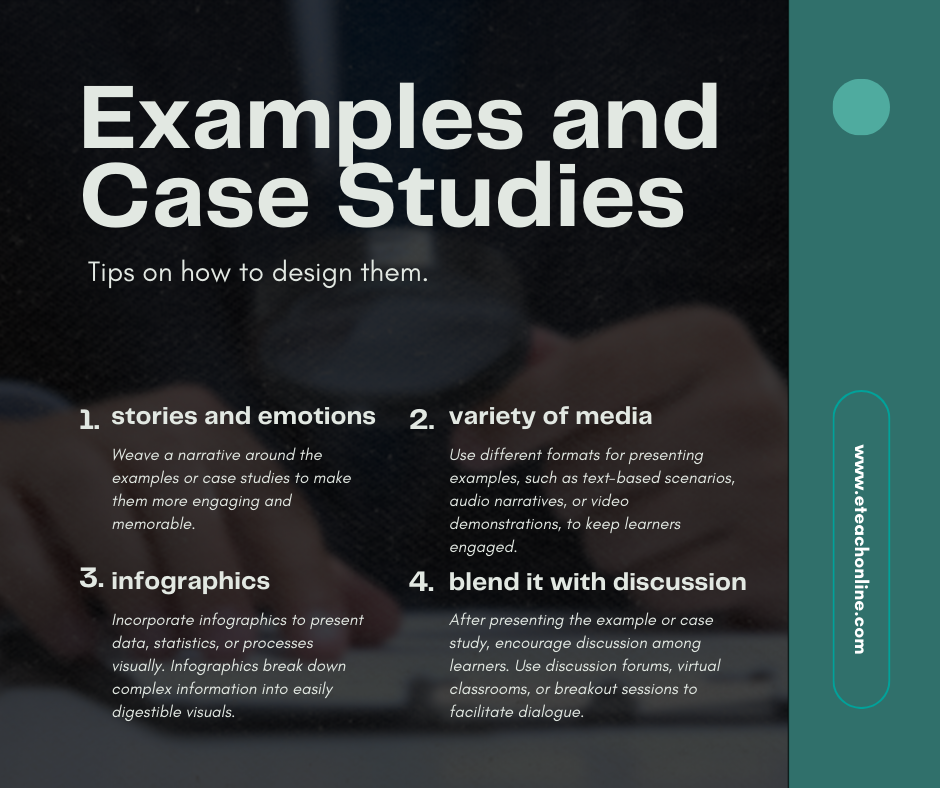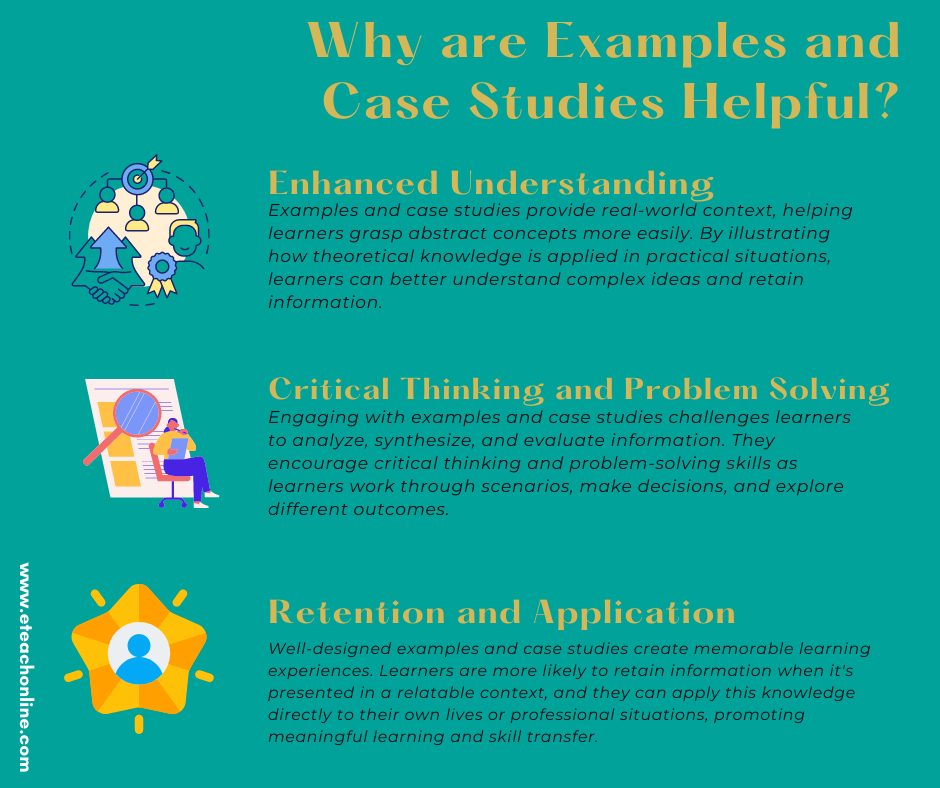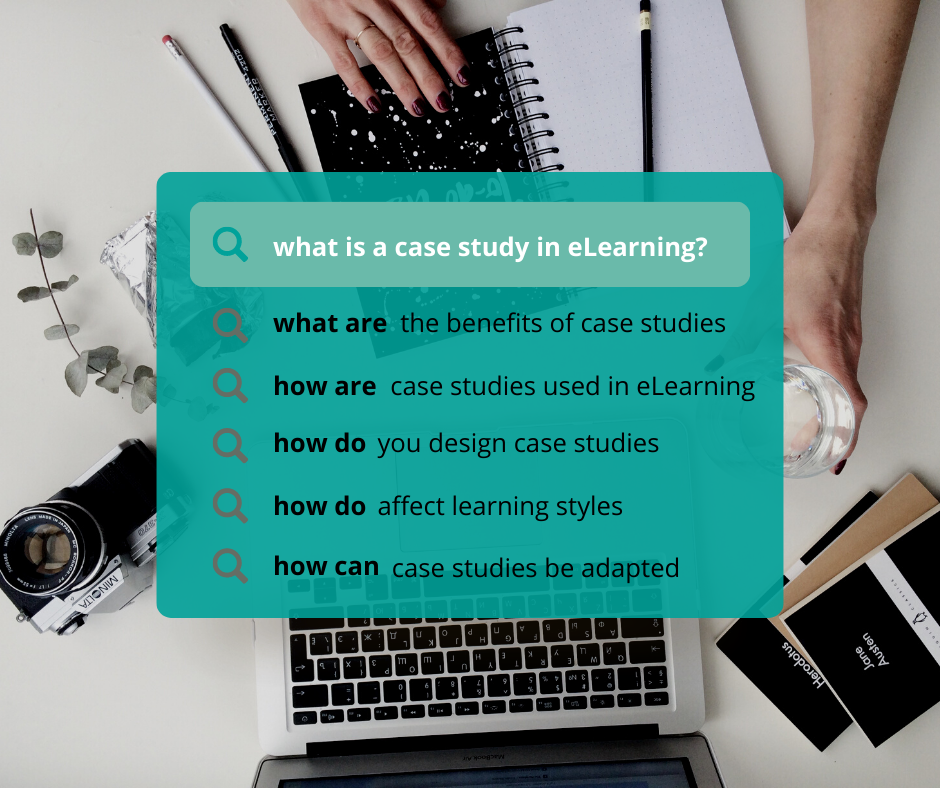Unlock the Episode: Listen and Download the Free MP3 from My Podcast Today!
SUMMARY
- Role of Case Studies and Examples: Underscores the significance of case studies and examples in online learning. They serve as crucial tools to help learners relate to the subject matter by demonstrating how theoretical concepts apply to real-world situations. These practical illustrations are particularly effective for conveying complex knowledge and experiences. Incorporating case studies and examples into elearning courses is essential for learners to make sense of illustrated concepts, moving beyond mere textbook content.
- Interactive Engagement and Varied Media: To ensure optimal engagement, stresses the importance of interactivity and variety in content delivery. Simply presenting information in a text-based format can lead to disengagement. Instead, incorporating different forms of media such as audio narrations, images, videos, and presentations can captivate learners and enhance their understanding. Interactive elements make the learning experience more immersive and participatory, preventing boredom and fostering a deeper connection with the material.
- Emotional Storytelling for Engagement: Explores the power of emotional storytelling to heighten engagement. When learners connect with characters and narratives on an emotional level, the content becomes more relatable and memorable. By framing educational content within a compelling storyline, learners can place themselves in the shoes of the main characters, making the learning experience more relatable and enjoyable. This emotional connection breathes life into case studies and examples, transforming them from dry facts into captivating narratives.
- Elaboration and Stepwise Approaches to Goal Analysis: Introduces two approaches for analyzing learning goals: elaboration and stepwise. Elaboration involves starting with the simplest version of a task and gradually adding complexity. On the other hand, the stepwise approach breaks down a goal into a sequence of major steps required for its accomplishment. Both approaches contribute to effective instructional design by ensuring clear learning objectives that align with the scope of the course and the needs of the learners.
- Crafting Clear Learning Objectives: Emphasizes the importance of well-defined learning objectives. By analyzing goals through either the stepwise or elaboration approach, educators can create objectives that outline what learners need to accomplish. Learning objectives should be written in a way that paints a clear picture of the desired outcomes. This clear communication guides instructional content development and helps learners understand what they should be able to do by the end of the course.
- Balancing Complexity and Engagement: A key takeaway from this guide is the balance between complexity and engagement. While it's essential to provide comprehensive and in-depth learning experiences, it's equally crucial to maintain learner engagement. Combining interactive elements, emotional storytelling, and clear learning objectives creates a dynamic learning environment that fosters understanding and enjoyment. This balance ensures that learners not only acquire knowledge but also stay motivated throughout their learning journey.
INSPIRATIONAL QUOTES







TRANSCRIPT
Case studies and examples help online learners relate to the subject matter and see how it ties into real world situations. They are also good for teaching more complex knowledge and experiences, they are necessary to ensure that learners are able to make sense of illustrated concepts specifically in an elearning course, it is essential to ensure that the examples and case studies that you provide to students aren't just textbooks thrown onto a page. It is important that you create the content so that it is interactive, and engaging. Otherwise, they will get bored and not even review it. Case studies contain features such as facts, statistics, and first person accounts that are supported by reliable sources. They are hypothetical situations that are based in reality. Elearning case studies drive the point home so that online learners connect with the content on a personal level. However, it is important to ensure that you add interactive elements to your elearning case studies in order to boost active participation. Examples can be used both deductive Lee and inductively. Deductive examples illustrate a concept or show the steps of a procedure that was previously introduced. Whereas inductive examples stimulate thinking and reflection prior to providing definitions and principles. Examples are important because they help bridge the gap between theory and practice. Examples can be given on how to accomplish a task along with an explanation of the underlying principle, followed by questions about the examples to stimulate the learner's reflection and prepare them for assessment.
Connect using story and emotions, case studies and examples naturally lack of motion, online learners will have a difficult time connecting with the elearning content, which will cause them to be less engaged. One way of increasing engagement is by framing the content using a compelling storyline with characters. People relate to stories on an emotional level. Providing your online students with stories allows them to put themselves into the role of the main character and connect with them on an emotional level watching the events unfold. Without story case, studies and examples are simply cold hard facts, which can be very boring for an online student. When presenting the case study or example, it is great practice to present the content using a variety of media including text, audio narrations, pictures, or even videos. This will help increase student engagement. It may also be helpful to present a case study or example to your students in action. Using a presentation tool, you can walk the students through the elearning events. Putting the main issue into perspective, you may even consider incorporating clickable links that explore different aspects of the situation. These links can reveal more information about the particular topic like clues, helping the students solve the mystery. One tool that I love to use for making interactive presentations is Prezi. Creating an infographic infographics are perfect for case studies as they provide a visual representation of the key facts and ideas. Infographics are perfect for case studies and examples as they provide a visual representation of the key facts and ideas. With infographics, you can easily integrate images, graphs and charts that illustrate the key points. You can also include timelines to highlight trends or important elearning events. Make sure that the visuals you choose are relatable and reflective of the subject matter. It's also important to focus only on a few specific ideas. To avoid cognitive overwhelm. You shouldn't illustrate every aspect of the case study or example but the most relevant pieces of data, blend it with a discussion. The adoption of online discussion forums has now become a common strategy in elearning. online discussion forums enable flexible and independent learning and knowledge construction helping students develop critical thinking skills. Incorporating an example or case study with an online asynchronous discussion is a great way to increase active participation and learning among students online. Research has shown a significant improvement in knowledge retention and increases workload for students by including peer to peer learning. Specifically in an online course it is essential to ensure that the examples and case studies that you provide to the student aren't just textbooks thrown onto a page. what would normally be considered quite boring for online students? Applying these tips when using these instructional strategies will definitely increase engagement and interactivity in your online course.
JOIN THE
eLearning and Instructional Design for Beginners Community
- In-depth courses & training
Access my rapidly growing library, attend monthly live training & accountability support groups
- Exclusive tools & members-only discounts
Tools, templates, downloads, checklists and more - plus receive special perks & discounts
- Supportive community & network
Feedback and support from fellow instructional designers, career-driven business owners, and experts who will keep you on track
Get Your Software Toolkit for Instructional Designers
Tools & processes that will help you plan, build, and grow your instructional design career and freelance business.



